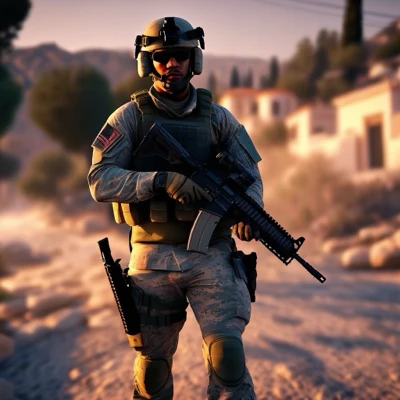Military Sexual Assault at Fort Hood: A Failure of Leadership
Our military defense lawyers aggressively defend the following UCMJ sexual crimes:
- UCMJ Sex Related Crimes
- Article 117a UCMJ Broadcast Intimate Images
- Article 120 UCMJ Rape
- Article 120 UCMJ Sexual Assault
- Article 120 UCMJ Aggravated Sexual Contact
- Article 120 UCMJ Abusive Sexual Contact
- Article 120a UCMJ Deposit of Obscene Matters
- Article 120b UCMJ Rape of a Child
- Article 120b UCMJ Child Sexual Assault
- Article 120b UCMJ Child Sexual Abuse
- Article 120c UCMJ Indecent Recording
- Article 120c UCMJ Distributing Recording
- Article 120c UCMJ Forcible Pandering
- Article 120c UCMJ Indecent Exposure
- Article 130 UCMJ Stalking
- Article 128b UCMJ DV Strangulation
- Article 132 UCMJ Retaliation
- Article 134 UCMJ Adultery
- Article 134 UCMJ Possessing Child Porn
- Article 134 UCMJ Prostitution
- Article 134 UCMJ Indecent Language
- Article 134 UCMJ Pandering
- Article 134 UCMJ Sexual Harassment
I. An Overview of the Fort Hood Military Sexual Assault Report, Finding #1
 The U.S. Army has a long and storied history of protecting the nation, upholding its values, and ensuring the well-being of its soldiers. However, the Fort Hood Independent Review Committee (FHIRC) report, released in 2020, exposed a deeply troubling reality: a pervasive failure to address military sexual assault and military sexual harassment within the ranks at Fort Hood.
The U.S. Army has a long and storied history of protecting the nation, upholding its values, and ensuring the well-being of its soldiers. However, the Fort Hood Independent Review Committee (FHIRC) report, released in 2020, exposed a deeply troubling reality: a pervasive failure to address military sexual assault and military sexual harassment within the ranks at Fort Hood.
The report’s findings, particularly Finding #1, highlight a command climate that neglected to instill the core values of the Sexual Harassment/Assault Response and Prevention (SHARP) Program, leaving soldiers vulnerable and unprotected.
Military Sexual Assault at Fort Hood Defined
Military sexual assault is a heinous crime that not only inflicts devastating harm on individual victims but also erodes the cohesion and readiness of military units. The Department of Defense (DoD) has long recognized the gravity of this issue, implementing various programs and policies to combat it. The SHARP Program, established in 2005, is the Army’s primary tool for addressing sexual misconduct within its ranks. However, the FHIRC report reveals that despite the existence of the SHARP Program, its implementation at Fort Hood was severely lacking.
Finding #1 of the FHIRC report
Finding #1 of the FHIRC report states: “The Implementation of the SHARP Program at Fort Hood Has Been Ineffective, Due to a Command Climate That Failed to Instill SHARP Program Core Values Below the Brigade Level” (Department of the Army, 2020) (pg. 17). This finding is a damning indictment of the leadership at Fort Hood, suggesting that a toxic command climate allowed sexual misconduct to fester and go unpunished.
The report defines command climate as the prevailing atmosphere within a military unit, shaped by its leaders’ attitudes, behaviors, and actions. A negative command climate can create an environment where sexual misconduct is not only tolerated but, in some cases, even encouraged.
Statistics on Military Sexual Assault at Fort Hood
 The statistics surrounding military sexual assault are alarming. According to the Department of Defense’s Annual Report on Sexual Assault in the Military, there were 6,236 reports of sexual assault involving service members in 2019 alone. At Fort Hood, the problem was particularly acute. The FHIRC report found that the risk of sexual assault for women at Fort Hood was “persistently high” before and during the review period (Department of the Army, 2020) (pg. 19). This high risk was evident in various data sources, including the DoD’s own studies and command climate surveys.
The statistics surrounding military sexual assault are alarming. According to the Department of Defense’s Annual Report on Sexual Assault in the Military, there were 6,236 reports of sexual assault involving service members in 2019 alone. At Fort Hood, the problem was particularly acute. The FHIRC report found that the risk of sexual assault for women at Fort Hood was “persistently high” before and during the review period (Department of the Army, 2020) (pg. 19). This high risk was evident in various data sources, including the DoD’s own studies and command climate surveys.
Military Sexual Assault at Fort Hood was Widespread
The FHIRC report paints a picture of a command climate at Fort Hood that was permissive of sexual misconduct. Soldiers, particularly those in the lower enlisted ranks, lacked confidence in the SHARP Program and feared retaliation for reporting incidents of sexual assault and military sexual harassment.
The report states, “Without intervention from the NCOs and officers entrusted with their health and safety, victims feared the inevitable consequences of reporting: ostracism, shunning and shaming, harsh treatment, and indelible damage to their career” (Department of the Army, 2020) (pg. 5). This fear of reprisal, coupled with a lack of faith in the system’s ability to protect them, created a chilling effect on reporting, leaving many victims to suffer in silence.
II. Background on the FHIRC Report into Military Sexual Assault at Fort Hood
In response to the tragic death of SPC Vanessa Guillen and a series of other disturbing incidents at Fort Hood, the U.S. Secretary of the Army established the Fort Hood Independent Review Committee (FHIRC) in July 2020 (Department of the Army, 2020).
The committee was tasked with conducting a comprehensive assessment of the command climate and culture at Fort Hood, with a specific focus on the effectiveness of the SHARP Program and its impact on the safety, welfare, and readiness of soldiers. The committee was also directed to review the regulations, policies, and procedures governing responses to on and off-post crime, including reports of missing soldiers.
Military Sexual Assault Investigation
The FHIRC comprised five members with diverse backgrounds and expertise, including legal, military, and investigative experience. The committee was chaired by Chris Swecker, a retired FBI Special Agent and head of the FBI’s Criminal Investigation Division.
Other members included Jonathan P. Harmon, a West Point graduate and Chairman of McGuireWoods, a prominent law firm; Carrie F. Ricci, a retired Army JAG officer and senior executive at the U.S. Department of Agriculture; Queta Rodriguez, a retired U.S. Marine Corps intelligence analyst and manpower operations officer; and Jack L. White, a West Point graduate, attorney, and expert in government investigations and civil rights claims (Department of the Army, 2020).
Fort Hood Report: Military Sexual Assault Methodology
 To fulfill its mandate, the FHIRC employed a multi-faceted methodology, including extensive data analysis, document review, and numerous interviews with soldiers, civilians, and key stakeholders at Fort Hood and in the surrounding community. The committee conducted individual and group interviews, ensuring the anonymity and confidentiality of participants to encourage candid responses.
To fulfill its mandate, the FHIRC employed a multi-faceted methodology, including extensive data analysis, document review, and numerous interviews with soldiers, civilians, and key stakeholders at Fort Hood and in the surrounding community. The committee conducted individual and group interviews, ensuring the anonymity and confidentiality of participants to encourage candid responses.
The FHIRC interviewed 647 soldiers stationed at Fort Hood, most of whom were assigned to the 1st Cavalry Division and the 3rd Cavalry Regiment, where SPC Guillen had been assigned. The committee also conducted group interviews with over 1,800 soldiers and Army civilians, and specialized interviews with over 150 key stakeholders, including military leaders, law enforcement officials, legal experts, and community representatives (Department of the Army, 2020).
Fort Hood Report: Military Sexual Assault Approach
The FHIRC’s comprehensive approach allowed for a thorough examination of the command climate and culture at Fort Hood, providing valuable insights into the factors contributing to the prevalence of sexual misconduct and other crimes. The committee’s findings and recommendations, detailed in the report, serve as a roadmap for the Army to address these systemic issues and create a safer and more respectful environment for all soldiers.
The FHIRC report identified nine key findings, each highlighting specific deficiencies and areas for improvement. These findings ranged from the ineffective implementation of the SHARP Program to the underreporting of sexual assault and harassment, structural flaws in the program, inefficiencies in the Criminal Investigation Division (CID), and a permissive command climate that tolerated sexual misconduct. The report also addressed issues related to public relations, missing soldier protocols, crime prevention, and the overall well-being of soldiers.
The FHIRC’s findings and recommendations have far-reaching implications for the Army and the military community. They underscore the urgent need for comprehensive reform and a renewed commitment to addressing the scourge of military sexual assault and military sexual harassment. The report serves as a stark reminder that the military must prioritize the safety and well-being of its soldiers, fostering a culture of respect, dignity, and accountability at all levels of leadership.
III. Finding #1: Ineffective Implementation of the SHARP Program
The Fort Hood Independent Review Committee’s (FHIRC) Finding #1 is a scathing critique of the Sexual Harassment/Assault Response and Prevention (SHARP) program at Fort Hood. It states that the SHARP program was ineffective due to a command climate that failed to instill SHARP’s core values below the brigade level (Department of the Army, 2020).
This finding suggests that while the basic components of the SHARP program were in place at the higher echelons of Fort Hood’s leadership, the program’s core values and principles were not effectively communicated or enforced at the lower levels, where most soldiers serve. The report emphasizes that the enlisted ranks, comprising 85% of Fort Hood’s personnel, are where most sexual assault victims and perpetrators are found (Department of the Army, 2020).
Fort Hood Military Sexual Assault: Command Failures
The FHIRC attributes this failure to a lack of command emphasis on the SHARP program. The report states, “The main cause was the inability of the command elements at the Division and Brigade levels to proactively drive the SHARP Program elements of knowledge, prevention, reporting, response, and recovery down into the ranks where most of the SHARP violations took place” (Department of the Army, 2020) (pg. 17). This lack of emphasis resulted in a program that appeared compliant on the surface but was hollow and ineffective in practice.
Fort Hood Military Sexual Assault: Weak SVC Presence
The report identifies several specific pieces of evidence to support this finding. First, soldiers lacked knowledge about basic SHARP reporting methods and their right to Special Victims’ Counsel (SVC) (Department of the Army, 2020). The report highlights that only 46% of the 3rd Cavalry Regiment (3CR) enlisted soldiers could demonstrate basic knowledge of SHARP reporting processes and the right to an SVC (Department of the Army, 2020). This lack of awareness is particularly concerning given that the 3CR is a combat unit where a significant number of sexual assaults occur.
Fort Hood Military Sexual Assault: Fear and Retaliation
Second, the report found a universal fear of retaliation, exposure, and ostracism among soldiers who reported SHARP violations (Department of the Army, 2020). This fear was so pervasive that it discouraged many victims from coming forward, leading to significant underreporting of sexual assault and harassment. The report notes, “Without intervention from the NCOs and officers entrusted with their health and safety, victims feared the inevitable consequences of reporting” (Department of the Army, 2020) (pg. 5).
Fort Hood Military Sexual Assault: Lack of Prevention
Third, the FHIRC’s review of the mandatory Sexual Assault Review Boards (SARBs) revealed an emphasis on administrative compliance rather than substantive prevention (Department of the Army, 2020). The SARBs, designed to provide executive oversight and guidance on the SHARP program, were primarily focused on addressing administrative deficiencies rather than developing proactive strategies to prevent sexual misconduct.
Fort Hood Military Sexual Assault: SHARP Understaffed
Fourth, the SHARP program at Fort Hood was chronically understaffed, undertrained, and under-resourced (Department of the Army, 2020). This lack of resources further hampered the program’s ability to address the issue of sexual misconduct effectively. The report states, “From the III Corps level and below, the SHARP Program was chronically under-resourced, due to understaffing, lack of training, lack of credentialed SHARP professionals, and lack of funding” (Department of the Army, 2020) (pg. 5).
Finally, the report highlights a pervasive lack of confidence in the SHARP program among soldiers (Department of the Army, 2020). This lack of confidence stemmed from various factors, including the fear of retaliation, the perception that reports were not taken seriously, and the belief that the program was ineffective in holding perpetrators accountable. The report notes, “Many have left the Army or plan to do so at the earliest opportunity” due to their experiences with the SHARP program (Department of the Army, 2020) (pg. 5).
Fort Hood Military Sexual Assault: Lack of Accountability
The FHIRC’s findings regarding the ineffective implementation of the SHARP program at Fort Hood are a stark reminder of the challenges the military faces in addressing sexual misconduct. The report’s emphasis on the role of command climate and leadership accountability underscores the need for a cultural shift within the military to create an environment where sexual assault and harassment are not tolerated.
The FHIRC’s recommendations, which include structural changes to the SHARP program and increased emphasis on leadership accountability, provide a roadmap for the Army to address these systemic issues and create a safer and more respectful environment for all soldiers.
IV. The Role of Command Climate
The Fort Hood Independent Review Committee (FHIRC) report emphasizes the critical role of command climate in shaping the effectiveness of the SHARP program and, ultimately, the prevalence of military sexual assault and military sexual harassment. Command climate refers to the overall atmosphere within a military unit, influenced by its leaders’ attitudes, behaviors, and actions.
It encompasses soldiers’ shared perceptions of the unit’s values, norms, and expectations. A positive command climate fosters trust, respect, and accountability, while a negative command climate can create an environment where sexual misconduct is tolerated or even encouraged.
Fort Hood Military Sexual Assault: Command Climate
The FHIRC report highlights that the command climate at Fort Hood failed to prioritize the SHARP program and the well-being of soldiers. The report states, “Across the installation, and especially in the Combat Brigades and their supporting elements, readiness was the primary focus of all activities, while the SHARP Program and the general well-being of Soldiers was a distant second” (Department of the Army, 2020) (pg. 17).
This prioritization of mission readiness over soldier welfare created a culture where sexual misconduct was not adequately addressed.
Fort Hood Military Sexual Assault: Poor SHARP Program
The report further notes that the lack of command emphasis on the SHARP program was evident in several ways. First, there was a lack of knowledge and awareness of the program among soldiers, particularly in the lower enlisted ranks. This lack of awareness stemmed from inadequate training and a failure to communicate the SHARP program’s importance effectively.
Fort Hood Military Sexual Assault: Retaliation
Second, soldiers feared retaliation for reporting sexual misconduct, indicating a lack of trust in the chain of command and a perception that reports would not be taken seriously. The report states, “Too many NCOs acted as if they had to shield the higher echelons from SHARP issues; and, there were too many instances described during individual interviews of NCOs themselves taking advantage of subordinate victims” (Department of the Army, 2020) (pg. 17).
Fort Hood Military Sexual Assault: Poor Leadership
The FHIRC report also highlights the failure of leadership to address known risks of sexual assault and harassment at Fort Hood. The report states, “During the review period, no Commanding General or subordinate echelon commander chose to intervene proactively and mitigate known risks of high crime, sexual assault, and sexual harassment” (Department of the Army, 2020) (pg. 5). This lack of proactive intervention allowed a permissive environment for sexual misconduct to persist, with devastating consequences for the victims.
Fort Hood Military Sexual Assault: Negative Climate
The impact of a negative command climate on the well-being of soldiers cannot be overstated. The FHIRC report reveals that many victims of sexual assault and harassment at Fort Hood felt unsupported and unprotected by their chain of command. This lack of support led to isolation, despair, and a loss of faith in the military as an institution. The report quotes one soldier as saying, “The general feeling of the soldiers in my [unit] is that the SHARP program is largely ineffective and worthless” (Department of the Army, 2020) (pg. 36).
The FHIRC report’s findings on the role of command climate in the prevalence of military sexual assault and military sexual harassment are a stark reminder of the importance of leadership in shaping the culture and values of military units. A positive command climate, characterized by trust, respect, and accountability, is essential for preventing sexual misconduct and ensuring the well-being of all soldiers.
The report’s recommendations for addressing the deficiencies in the command climate at Fort Hood, including increased leadership accountability and a renewed focus on prevention, provide a roadmap for the Army to create a safer and more respectful environment for all its members.
V. Leadership Accountability
The Fort Hood Independent Review Committee (FHIRC) report places a significant emphasis on leadership accountability in addressing the issue of military sexual assault and military sexual harassment. The report asserts that the failure to effectively implement the SHARP program and create a safe environment for soldiers ultimately rests on the shoulders of the leadership at Fort Hood. The report states, “The result was a pervasive lack of confidence in the SHARP Program and an unacceptable lack of knowledge of core SHARP components regarding reporting and certain victim services” (Department of the Army, 2020) (pg. 5). This lack of confidence and knowledge, according to the FHIRC, can be directly attributed to the lack of command emphasis on the SHARP program.
Fort Hood Military Sexual Assault: No Proactive Measures Taken
The report highlights that during the review period, no commanding general or subordinate commander took proactive measures to mitigate the known risks of sexual assault and harassment at Fort Hood (Department of the Army, 2020). This lack of action is a clear indication of a failure in leadership. The report emphasizes that leaders at all levels, from the highest-ranking officers to non-commissioned officers (NCOs), have a responsibility to create a command climate that prioritizes the well-being of soldiers and does not tolerate sexual misconduct.
The FHIRC report does not mention specific instances where leadership failed to uphold their responsibilities. It criticizes the Sexual Assault Review Board (SARB) process for focusing on administrative matters rather than substantive prevention efforts.
The report states, “While a powerful tool by design, the SARB process became a missed opportunity to develop and implement proactive strategies to create a respectful culture and prevent and reduce incidents of sexual assault and sexual harassment” (Department of the Army, 2020) (pg. 5). This failure to utilize the SARB effectively demonstrates a lack of leadership commitment to addressing the root causes of sexual misconduct.
The report also points to instances where NCOs, often the first line of defense for soldiers, failed to protect their subordinates. The report notes, “Too many NCOs acted as if they had to shield the higher echelons from SHARP issues; and, there were too many instances described during individual interviews of NCOs themselves taking advantage of subordinate victims” (Department of the Army, 2020) (pg. 17). This betrayal of trust by NCOs further erodes the confidence of soldiers in the chain of command and the SHARP program.
Fort Hood Military Sexual Assault: Safe Environment
The FHIRC report’s emphasis on leadership accountability is crucial to its findings. It underscores the fact that creating a safe and respectful environment for soldiers is not solely the responsibility of the SHARP program but a fundamental duty of military leaders at all levels. The report’s recommendations for addressing the leadership failures at Fort Hood include increased training and education for commanders and NCOs on the SHARP program, greater emphasis on prevention efforts, and holding leaders accountable for the command climate within their units.
Fort Hood Military Sexual Assault: No Accountability of Leaders
The report’s call for leadership accountability is not merely a matter of assigning blame but a recognition that the prevention of military sexual assault and military sexual harassment requires a top-down approach. Leaders must set the tone and create a culture where sexual misconduct is not tolerated.
They must be held accountable for their actions and inaction, and they must be willing to take decisive measures to address this pervasive problem. The FHIRC report serves as a wake-up call for the military, highlighting the urgent need for leadership to step up and take responsibility for the well-being of their soldiers.
VI. Conclusion: Military Sexual Assault at Fort Hood, TX
The Fort Hood Independent Review Committee (FHIRC) report concludes by acknowledging the military’s “time-honored role in protecting the security of our Nation” and the sacrifices made by soldiers and their families (Department of the Army, 2020) (pg. 8).
The report emphasizes that the findings and recommendations are not intended as a basis for punitive actions but rather as constructive improvements to support the mission and well-being of soldiers. The FHIRC recognizes the corrosive effect of sexual assault and harassment on unit cohesion and morale, emphasizing that such behavior is contrary to Army values.
Fort Hood Military Sexual Assault: Systemic Issues
The report’s conclusion underscores the importance of addressing the systemic issues identified in the findings to create a military culture that upholds the Army’s core values. The FHIRC calls for a renewed commitment to leadership engagement, accountability, and proactive measures to prevent sexual misconduct. The report states, “Soldiers assaulting and harassing other Soldiers is both corrosive to esprit de corps and contrary to good order and discipline. Worse, it is contrary to Army Values” (Department of the Army, 2020) (pg. 8).
Fort Hood Military Sexual Assault: A Roadmap
While acknowledging the challenges of implementation, the FHIRC’s recommendations offer a comprehensive roadmap for the Army to address the shortcomings identified in the report. The recommendations encompass various aspects of the SHARP program, including its structure, implementation, legal components, and disclosure procedures. The report also addresses broader issues related to command climate, crime prevention, public relations, and the overall well-being of soldiers.
The report’s conclusion emphasizes the need for a cultural shift within the military to create an environment where sexual misconduct is not tolerated. This cultural shift requires a change in mindset at all levels of leadership, from the highest-ranking officers to NCOs. The report states, “The Findings and Recommendations contained in this Report are offered in the spirit of constructive improvements, not to provide a basis for punitive actions” (Department of the Army, 2020) (pg. 8).
Fort Hood Military Sexual Assault: Renewed Commitment
The FHIRC report concludes by calling for a renewed commitment to the well-being of soldiers and a recognition that their safety and security are paramount. The report states, “Each Member of the FHIRC accepted this appointment with the intention and hope of supporting the mission and well-being of our brave Soldiers” (Department of the Army, 2020) (pg. 8). This commitment to the well-being of soldiers is not only a moral imperative but also essential for maintaining a strong and effective military force.
Fort Hood Military Sexual Assault: Command Culture
In conclusion, the FHIRC report’s findings and recommendations provide a comprehensive assessment of the command climate and culture at Fort Hood, highlighting the failures in leadership that contributed to the prevalence of sexual misconduct.
The report’s emphasis on leadership accountability, proactive prevention measures, and a cultural shift towards respect and dignity offers a roadmap for the Army to address these systemic issues and create a safer and more respectful environment for all soldiers. The report’s conclusion reminds us that the military’s strength lies in its ability to fight wars and its commitment to upholding its values and protecting its members.
Resources on Military Sexual Assualt:
Military:
DoD Safe Helpline: The Department of Defense’s official resource for confidential support for survivors of sexual assault in the military. Provides 24/7 support and information.
Department of Defense Sexual Assault Prevention and Response Office (SAPRO): This office oversees the Department’s efforts to prevent and respond to sexual assault. Provides resources, reports, and policies.
- Website: https://www.sapr.mil/
Sexual Assault Prevention and Response (SAPR) Program: Each branch of the military has its own SAPR program website with resources specific to that branch.
Academic:
Veterans Affairs (VA) National Center for PTSD: Offers extensive information and resources on military sexual trauma (MST), a specific type of PTSD experienced by military sexual assault survivors.
- Website: https://www.ptsd.va.gov/
RAND Corporation: A research organization that has conducted numerous studies on military sexual assault, providing data and analysis on prevalence, risk factors, and prevention strategies.
Government:
U.S. Equal Employment Opportunity Commission (EEOC): While not exclusively focused on the military, the EEOC provides resources and legal information on sexual harassment in the workplace, which can be relevant to military settings.
- Website: https://www.eeoc.gov/
Government Accountability Office (GAO): This independent agency has published reports on the military’s efforts to address sexual assault, providing oversight and recommendations for improvement.
- Website: https://www.gao.gov/
Service Women’s Action Network (SWAN): A non-governmental organization focused on policy advocacy for servicewomen and women veterans. They provide resources and information on military sexual assault and advocate for legislative change.
- Website: https://servicewomen.org/
Protect Our Defenders: Another non-governmental organization dedicated to ending sexual assault in the military. They offer resources for survivors, advocate for policy changes, and provide legal assistance.
- Website: https://protectourdefenders.com/
National Sexual Assault Hotline (RAINN): While not specific to the military, RAINN provides confidential support and resources for survivors of sexual assault, including those in the military.
- Website: https://www.rainn.org/
This list offers a starting point for researching military sexual assault, encompassing official military channels, academic studies, and advocacy organizations. Remember, if you or someone you know needs help, the DoD Safe Helpline is available 24/7 for confidential support.
Our military defense lawyers aggressively defend the following UCMJ sexual crimes:
- UCMJ Sex Related Crimes
- Article 117a UCMJ Broadcast Intimate Images
- Article 120 UCMJ Rape
- Article 120 UCMJ Sexual Assault
- Article 120 UCMJ Aggravated Sexual Contact
- Article 120 UCMJ Abusive Sexual Contact
- Article 120a UCMJ Deposit of Obscene Matters
- Article 120b UCMJ Rape of a Child
- Article 120b UCMJ Child Sexual Assault
- Article 120b UCMJ Child Sexual Abuse
- Article 120c UCMJ Indecent Recording
- Article 120c UCMJ Distributing Recording
- Article 120c UCMJ Forcible Pandering
- Article 120c UCMJ Indecent Exposure
- Article 130 UCMJ Stalking
- Article 128b UCMJ DV Strangulation
- Article 132 UCMJ Retaliation
- Article 134 UCMJ Adultery
- Article 134 UCMJ Possessing Child Porn
- Article 134 UCMJ Prostitution
- Article 134 UCMJ Indecent Language
- Article 134 UCMJ Pandering
- Article 134 UCMJ Sexual Harassment



